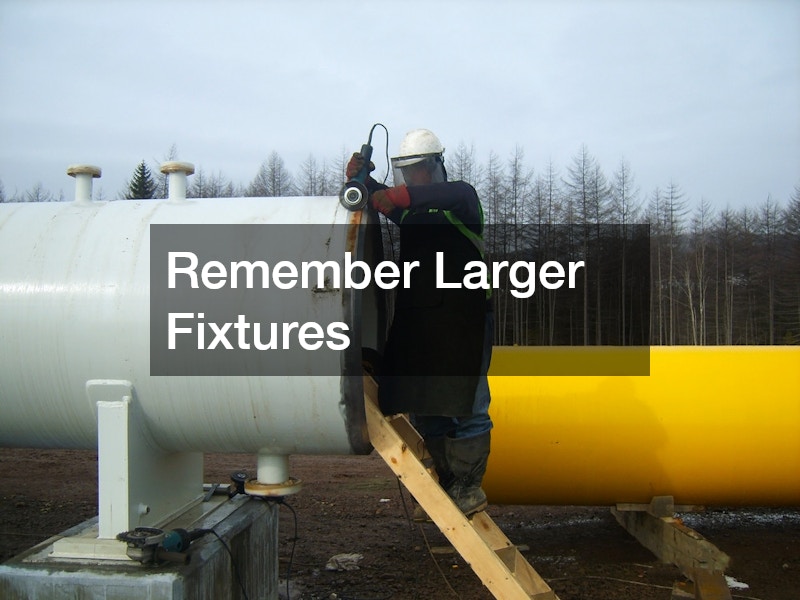A well-organized home is not just a more functional space; it also increases the longevity of your property and can significantly reduce unexpected expenses. One vital component of home management is creating a structured maintenance schedule that ensures all aspects of your property are regularly checked and maintained. This foresight not only boosts the aesthetic and operational triumphs of your home but also significantly contributes to long-term peace of mind. When home maintenance is meticulously planned and executed, it serves as an invaluable tool not only for preventing major repairs but also for optimizing the day-to-day functionality of your home. By anticipating needs and addressing issues before they escalate, homeowners can mitigate potential safety hazards and enhance their property’s value. Furthermore, it allows for better financial planning, as regular check-ups can be budgeted, rather than being blindsided by hefty emergency repairs. This article will guide you on how to forge a comprehensive maintenance schedule, ensuring every corner and crevice of your home is preserved in its best condition for years to come.
Make a List

Creating a structured maintenance schedule begins with crafting a thorough list of maintenance tasks that need to be accomplished. It is crucial to identify areas of your home that require regular attention, such as plumbing, roofing, electrical systems, and more. The focus should be on both internal and external elements, catering to the unique intricacies of your property.
Including external services like a drain cleaning service in your list can prevent small blockages from evolving into major plumbing issues. Likewise, maintaining a record of several maintenance service contacts ensures you have professional help readily available. From seasonal tasks to sporadic fixes, list-making aids in visualizing the required maintenance, promoting organized and efficient property management.
A detailed list elucidates every maintenance requirement, setting a foundation for scheduling tasks. This proactive approach mitigates the risk of overlooking critical maintenance requirements. Ultimately, a well-devised list is fundamental for implementing a maintenance plan that safeguards the condition of your home.
Assess Your Property
Every home is unique, which means that each will have distinct maintenance requirements. Assessing your property carefully allows you to identify specific needs, from structural elements to individual features. This step is critical in developing a maintenance schedule that is customized to address your particular home’s demands.
For instance, if your home includes a concrete patio or driveway, engaging a residential concrete service can help maintain structural integrity and aesthetics. With varying climate conditions and wear and tear, assessing these areas thoroughly can prevent costly repairs in the future. Structured maintenance focuses on this assessment as a cornerstone of an effective schedule.
A comprehensive assessment also reveals any new additions or improvements that may impact maintenance. An objective look at your property provides insights into efficient planning, prioritizing tasks, and ensuring no aspect of your property is neglected. In turn, this tailored assessment makes your maintenance approach robust and foolproof.
Address Necessary Repairs
Before implementing a maintenance schedule, it is imperative to address any existing damage or urgent repairs. Pre-existing issues, such as a leaking roof, can compromise the effectiveness of your schedule and lead to costly consequences. By addressing such repairs early, you prevent future setbacks and integrate remedies into your ongoing maintenance plan.
Considering roof replacement or repair can safeguard your home from weather conditions that may otherwise cause significant interior damage. Prioritizing such repairs not only extends the lifespan of your home but also provides some assurance against sudden shifts that interfere with scheduled maintenance. This step paves the way for a smooth, disturbance-free implementation of your maintenance plan.
Proactive measures reduce emergencies and the inevitable chaos and expenses that follow. Structured maintenance thrives on prevention, and promptly addressing repairs is the backbone of this preventative approach. In sum, integrating necessary repairs into the core of your maintenance strategy ensures continuity and comprehensive care for your home.
Prioritize Home Comfort

Your home’s ability to provide comfortable living conditions is another area that benefits significantly from maintenance. Prioritizing comfort can include aspects such as heating, cooling, and plumbing efficiency. Ensuring these elements are regularly checked not only adds comfort but also increases the home’s overall functionality.
For instance, integrating regular water heater services within your schedule ensures a consistent supply of hot water. Such maintenance ensures systems are running efficiently, saving energy, and preventing unexpected breakdowns. By monitoring and maintaining these systems, you ensure a seamless and comfortable living environment year-round.
Prioritizing home comfort directly influences your family’s quality of life. Structured maintenance that includes upgrades or regular checks on essential systems ensures your home adaply evolves with your comfort needs. Thus, aligning maintenance with comfort prioritization results in maximizing your home’s potential.
Look for Locals
When considering services for your maintenance schedule, prioritizing local professionals can offer numerous advantages. Hiring local plumbers, electricians, or maintenance services can lead to faster response times and personalized service. With proximity in location, these professionals can quickly address any urgent maintenance needs.
Moreover, local professionals tend to understand community-specific issues better, which can translate into more tailored and effective service. For instance, a local plumber might be familiar with common plumbing issues in your neighborhood, offering solutions that are practical and effective. This local insight can enhance the depth and reliability of your maintenance plan.
Additionally, partnering with local businesses strengthens community ties and supports local economies. By investing in local services, you contribute to a network of reliability and quality that is reciprocated into your home’s maintenance outcomes. Structured maintenance continues to thrive when local expertise is strategically incorporated.
Customize the Details
No two homes are exactly alike, which means that your maintenance schedule should reflect the unique aspects of your property. Customizing your plan should take into account any unique features, such as a tankless water heater, which might require specialized care. These customizations should be the focal point, ensuring unique components receive the care they need.
Utilizing service providers who understand these specialized elements is crucial for effective maintenance. When a service technician understands the specifics of a tankless water heater, they can offer tailored maintenance that extends the device’s lifespan and efficiency. This ensures that your maintenance plan effectively covers all customized elements of your home.
Attention to detailed customization avoids oversights in maintenance routines, thus preserving the quality and efficiency of unique home components. By incorporating these considerations into your structured maintenance schedule, you ensure personalized care that adapts to your home’s individual needs.
Remember Larger Fixtures

In a focus on daily comfort and visible features, larger and less visible home systems can often be overlooked. It is crucial to incorporate larger fixtures like the sewer system into your maintenance schedule. Regular inspections, facilitated by a sewer cleaning service, ensure these systems function optimally.
These larger fixtures are foundational to your home’s overall functionality, and their maintenance can prevent serious complications. Emergencies stemming from unnoticed issues in these systems can be avoided through scheduled and structured maintenance. Including larger fixtures in your schedule is vital to maintaining overall home integrity.
With the essential role these systems play, dedicated attention through maintenance not only saves you from future interruptions but also offers long-term assurance. Simple actions such as regular cleaning or inspections by professionals ensure these systems remain reliable, integral components of your home’s infrastructure.
Consider Material Upgrades
General home maintenance goes hand-in-hand with considering possible upgrades that can ease future upkeep and enhance aesthetics. For example, replacing or upgrading driveways with help from asphalt contractors can lessen future maintenance needs and improve home curb appeal. Such upgrades ensure that future maintenance is both efficient and effective.
When material upgrades are strategically timed and executed, they can integrate seamlessly with a quality maintenance plan. Installing durable materials as part of routine upgrades reduces regular wear, prolonging the intervals between necessary maintenance. Upgrading materials reflects a proactive aspect of maintaining your property’s standard and functionality.
Incorporating upgrades into your maintenance strategy not only enhances your home’s value but also provides a pragmatic approach to long-term care. Structured maintenance, supported by well-timed material upgrades, caters to efficient property management and offers a refined living experience.
Ensure Family Safety
Structured maintenance must also focus on aspects that directly affect your family’s safety and security. Regular maintenance of elements such as fences—whether they are custom aluminum fences or otherwise—ensures not just aesthetics but also provides safety from both external threats and internal accidents. Regular inspection and repair of fences should be part of every maintenance schedule.
A secure perimeter contributes significantly to the overall safety of your household, and materials like custom aluminum offer robust protection. Including these in your maintenance schedule prioritizes security as a top concern, along with regular aesthetic and functional upkeep. This dual focus elevates your home’s structure to a safe and secure environment.
Ensuring your property’s limits are well-maintained ultimately ensures peace of mind. By including safety-specific elements in your property maintenance, you take impactful steps to preserve both the well-being of your family and your property’s security.
Put Health First

Structured maintenance is not just about aesthetics and functionality; it also plays a crucial role in health. Regular inspections and mold removal services should be a fundamental part of your maintenance checklist. Mold can have detrimental effects on health, making its removal and prevention essential.
Including health-centered actions, like mold removal, ensures your home is a safe and healthy environment for your family. Preventative measures support long-term health and stave off the risks associated with living in a mold-infested environment. Incorporating these considerations into your schedule safeguards both home integrity and occupant health.
Addressing health-oriented aspects in maintenance fosters a nurturing home environment. Mold removal, sanitation, and regular health-related inspections serve as pillars to structured maintenance, contributing to a home that supports and enhances life quality effectively.
Creating a maintenance schedule that encompasses the various facets of home upkeep ensures long-lasting comfort, safety, and value. By prioritizing tasks such as employing local services, pursuing essential repairs, and accounting for unique features like a tankless water heater, you establish a maintenance routine that prevents costly emergencies. Remembering larger fixtures and considering material upgrades further reinforces the reliability of your home. Ultimately, structured maintenance keeps your property in top condition, promotes financial efficiency, and enhances the wellness of its inhabitants.



